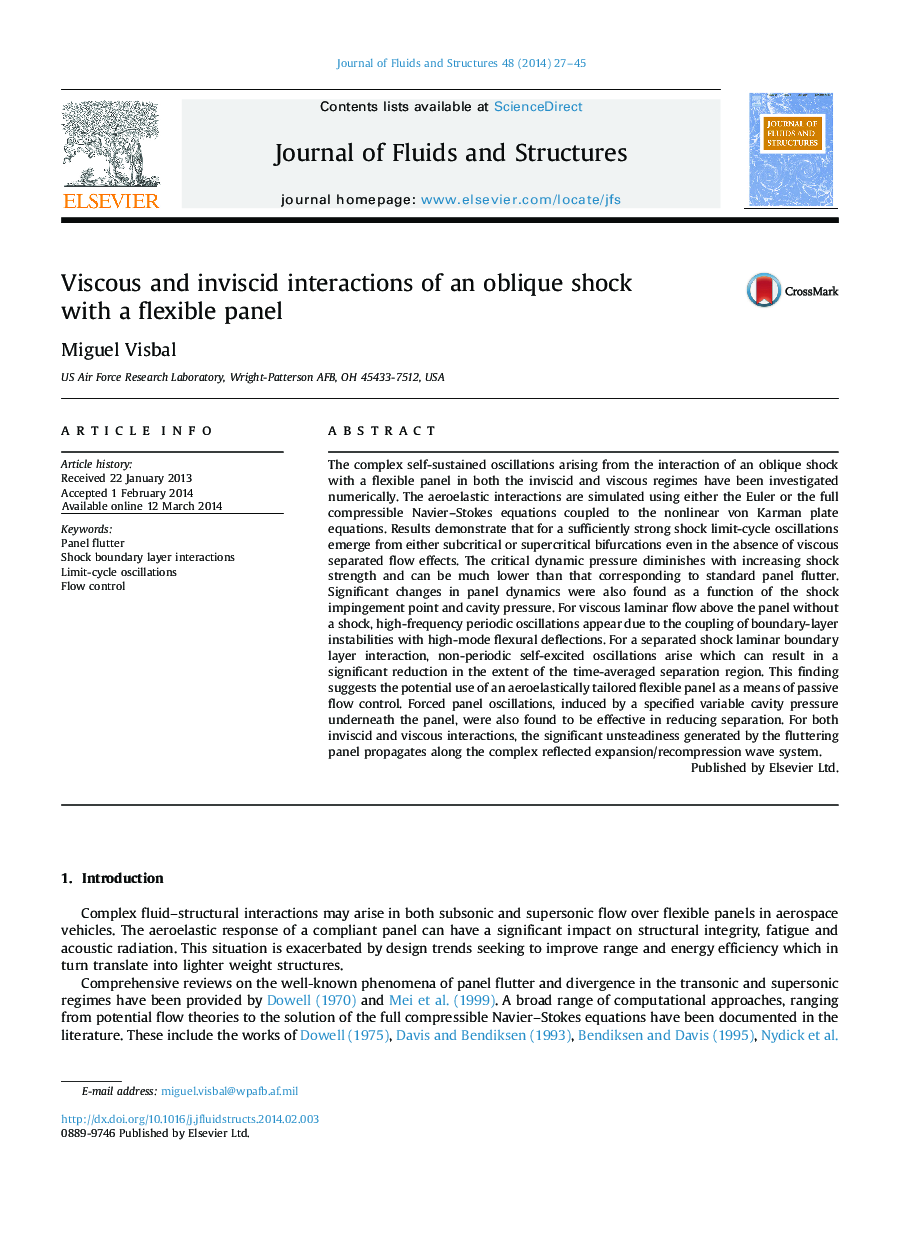| Article ID | Journal | Published Year | Pages | File Type |
|---|---|---|---|---|
| 793624 | Journal of Fluids and Structures | 2014 | 19 Pages |
The complex self-sustained oscillations arising from the interaction of an oblique shock with a flexible panel in both the inviscid and viscous regimes have been investigated numerically. The aeroelastic interactions are simulated using either the Euler or the full compressible Navier–Stokes equations coupled to the nonlinear von Karman plate equations. Results demonstrate that for a sufficiently strong shock limit-cycle oscillations emerge from either subcritical or supercritical bifurcations even in the absence of viscous separated flow effects. The critical dynamic pressure diminishes with increasing shock strength and can be much lower than that corresponding to standard panel flutter. Significant changes in panel dynamics were also found as a function of the shock impingement point and cavity pressure. For viscous laminar flow above the panel without a shock, high-frequency periodic oscillations appear due to the coupling of boundary-layer instabilities with high-mode flexural deflections. For a separated shock laminar boundary layer interaction, non-periodic self-excited oscillations arise which can result in a significant reduction in the extent of the time-averaged separation region. This finding suggests the potential use of an aeroelastically tailored flexible panel as a means of passive flow control. Forced panel oscillations, induced by a specified variable cavity pressure underneath the panel, were also found to be effective in reducing separation. For both inviscid and viscous interactions, the significant unsteadiness generated by the fluttering panel propagates along the complex reflected expansion/recompression wave system.
